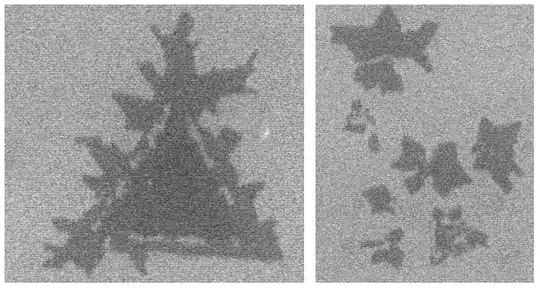I am doing a dissertation in Materials Engineering. I obtained the following images regarding crystal growth:
In the literature they usually call these structures "fractals" and calculate their fractal dimension using the box-counting method. From what I read on the internet, a fractal has to have self-similarity.
However, these structures appear to be so irregular that they do not appear to have any kind of repetition. The fractals according to the DLA (diffusion limited aggregation) have a fractal dimension of approximately 1.70, which is close to that of these structures. Why do the authors consider these structures fractal if there is no self-similarity? What are the characteristics necessary for a figure to be considered a fractal?
